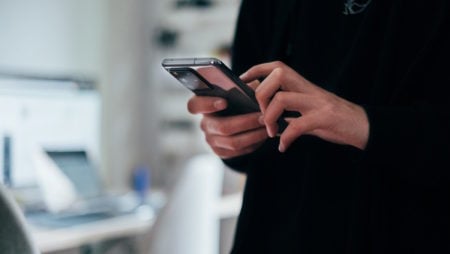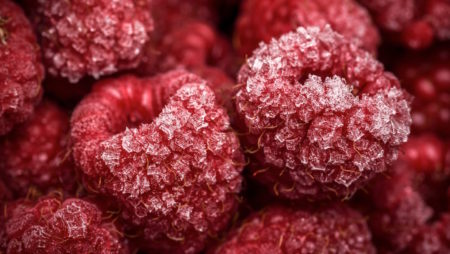I needed to know how to restore your dopamine levels.
I am teetering between two lives – one lived offline with a daily temptation to fully delete everything and one that requires selling my soul to the internet. Doing what I know you need to do to build a ‘platform’, which all publishers require you to have. Posting every day. Networking. Growth. Numbers.
The truth is, a platform does come with perks, I have experienced that firsthand. People give you free things (hello infrared sauna). They listen to your ideas. They invite you on their podcast. More numbers somehow = more authority/credibility. . . even though in reality, that has nothing to do with value or quality.
But what it takes to get and maintain that platform, I’m not sure if it’s for me.
When I catch myself scrolling through truly pointless and life-wasting content, I have a surreal moment of ‘what-in-the-actual-world!’ is happening to our society, and why am I so drawn to watch it?! Do I want to contribute to the madness by giving people more to consume?
Do I want to spend my time and energy creating things for the internet so I can have a job that depends on the internet? Why are we posting about our lives for others to see instead of just living them? Why are we constantly turning to distract ourselves by watching other people’s lives?
Because being entertained and distracted from your problems in life feels good.
Because platforms are alluring. Being seen and ‘liked” is addicting.
There’s great possibility in growing an online presence, but there is also great harm. You can learn, discover, and share helpful things through them, but you can also destroy your mind.
Why am I sharing this? I guess because I think we all question our online life and usage and we should start having conversations about it.
How to Restore Your Dopamine Levels
In an effort to find the sweet spot between living on an off-grid farm in Costa Rica (tempting) and posting on and checking my phone 24/7, here are the practices that are keeping me from going to either extreme:
1. Drip don’t pour dopamine
Dr. Anna Lembke author of Dopamine Nation explains it like this:
Because we have access to anything we want, whenever we want, and we are engaging in things like the internet, social media, porn, food, shopping, and substances so often, it’s essentially like a firehose of dopamine in our reward pathways. Our brain is sensing too much dopamine so it begins to compensate by downregulating our own dopamine production and transmission to levels way below our baseline. Which can be equivalent to clinical depression or clinical anxiety or insomnia.
Insane! She is saying that we are making ourselves psychologically ill because our brains are shutting down our own production of dopamine because of too much stimulation, too much reinforcement, too much dopamine.
How to Restore Your Dopamine Levels
Combat the triggers: We turn to distract ourselves to avoid uncomfortable emotions. The more triggered we are, the more we seek that hit of something to feel good. The opposite of triggers are glimmers. If you want to be triggered less, you have to have a ‘bank account’ full of glimmers of happiness, love, laughter, and connection. You do that by taking a few minutes to intentionally let your body register these micro-moments of happiness and soak them in. This almost creates a sort of balance from the stress, pain, and overstimulation. For me that looks like grounding outside daily, having long hugs with my girls, lying in the sun, going for long walks, listening to something that makes me laugh, drinking cacao slowly. . . anything that registers safety to your nervous system.
Restore your stores: Intermit fasting is all the rage, and intermit fasting from cheap sources of dopamine should be too. If you do end up dumping your dopamine out through a scrolling binge, or whatever your dopamine vice of choice is (it will happen), give your brain some time without any artificial stimulation to reset and restore. A fasting window daily will help keep your mind from being fried. (Basically- no phone in the morning, no phone before bed)
2. Close the tabs of your mind:
Human attention is like computer RAM. When your attention is split (or multiple programs are open) your performance suffers.
What to do about it: Constantly ask yourself WIN- What’s important now? Imagine that you’re in a transition point. . . What’s important now? Is it going to Instagram again or doing whatever you’re going to do reactively or habitually? Or is it stepping in between the old response and choosing a more empowered one? What’s Important Now? Get all of your Energy focused on that, not once in a while, but consistently, and you’ll be one of the few that get to where they want to go.
3. Imagine there’s a gun to your head
Imagine there is a gun to your head and you are only allowed to care about three things in your life. What are they? Then: why aren’t you focusing all of your effort and attention on them already? Well, this was an interesting and enlightening way to put things into perspective. When I did this, an online presence did not come to mind. . .
4. Posting my ideas, not my kids:
I finally made the decision to not post my kids online. I don’t want to use my kids for content, even though that’s what does really well. Posting their picture brings no benefit to them, but unfortunately, there is potential harm. This shift has challenged me to get creative with how and what I share – switching my perspective of social media from entertainment and distraction to work and creation.
5. Clock-in – phone out:
I finally bought this clock so there is no excuse for me to bring my phone to bed with me at night or wake up to it right next to me in the morning. Finding ways to treat my phone more as a landline that can’t move versus an extension of my own body has been so liberating. Also, I really like Opal for making sure you cannot access time-wasting apps in the morning or before bed.
6. Newsletters are the future:
There is good and helpful information out there, it’s just stuck in between memes, people dancing, and other distracting chaos. That’s why I like to get my information through people’s newsletters instead of social media so I still get the goods, without getting lost in the scroll. If you find someone you like on social media, see if they have a newsletter (most do). And if you are going to invest your energy into creating an online presence, I would suggest you put it into creating a newsletter. You own it, there is no algorithm to fight, it’s not addicting, and the numbers of your newsletter are incredibly more valuable than numbers on any social platform.
related articles:




No Comment
You can post first response comment.